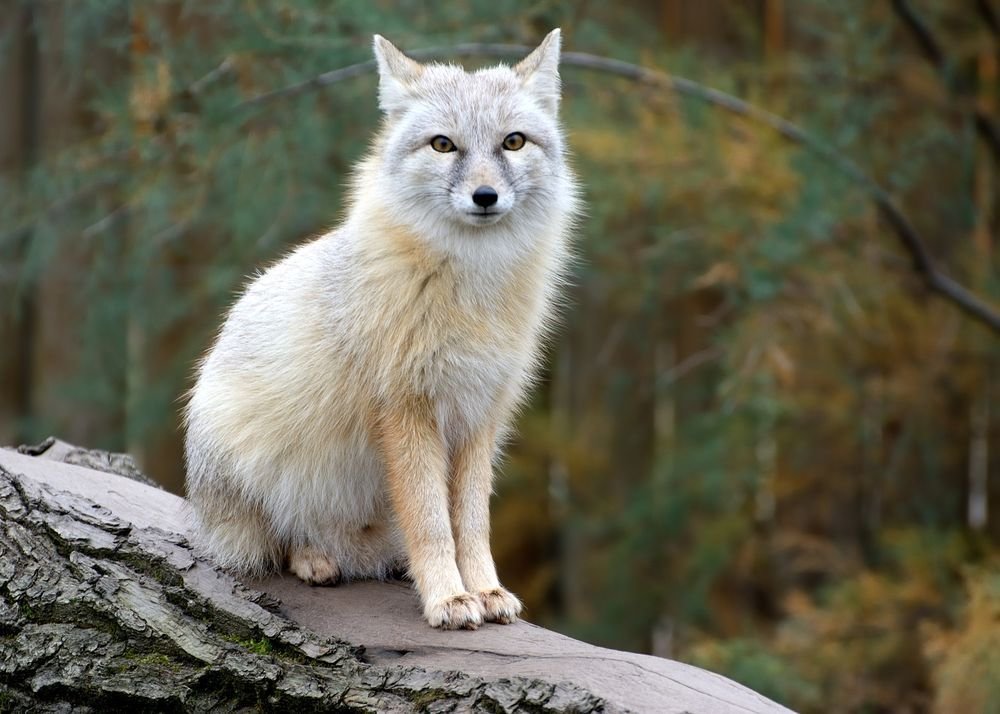Rare Corsac fox coming to the verge of extinction

TEHRAN – The Corsac fox, a small intelligent hunter, having a limited range in Turkmen Sahara, northeastern Iran, is endangered due to habitat fragmentation and lack of safety, Mehr reported on Tuesday.
Corsac foxes live in the steppes and semi desert of central and northeast Asia, found throughout Kazakhstan, Uzbekistan, and Turkmenistan, and through all except the northernmost regions of Mongolia. In the south, their range extends into the more northern parts of Iran, Tajikistan, Kyrgyzstan, Afghanistan, and China.
The major threat posed to the Corsac fox is hunting for the fur trade. In the late 19th century, up to 10,000 foxes were killed annually for pelt trade. Their other main threat is natural disasters, which can cause the numbers of foxes to drop by 90 percent in some areas.
Iran was not listed as a country within the distribution range of the Corsac fox since 2005, while it was cited later in 2014. The various distribution maps of the species often include two separate patches as its distribution range in Iran, first, on the southeastern coast of the Caspian Sea near the border with Turkmenistan, and second, around the Tejen Basin near the border with Afghanistan, although there is no record for the latter.
An official with the Golestan DOE, Mahmood Shakiba, said that living conditions for this rare species in the country is so improper that spotting a few nests of the specie is a pleasure.
In the Iranian calendar year 1395 (March 2016-March 2017), some 14 Corsac nests have been found in Turkmen Sahara in Golestan province, of which only four nests have been active and last year the nests have no longer been active, he added.
All Corsac habitats have been destructed turning into agricultural land, animal husbandry, manufacturing workshops or factories, so that the animal has no place to live, he regretted.
In recent years, the animal’s carcasses have been sighted in the region, the main cause of which has been poisonous baits, as well as livestock guard dogs killing Corsacs, so the region is no longer safe, he further lamented.
He went on to explain that this fox needs a huge area to live, while human activities such as agriculture, sheep grazing and using pesticides to deal with desert locust, limits their habitat and the number of rodents and insects, which are the main preys the animal feeds on.
It is not possible to declare a huge area as a protected area to conserve a few foxes; but we must try to protect them by training people on the importance of the precious creature, he noted.
On the other hand, Ramezanali Ghaemi, a former official with the Golestan province DOE, said that the only way to preserve the limited number of remaining Corsac foxes, is to declare the region as a protected area.
As the species is at the top of the food chain, it plays an important role in conservation of the country’s ecosystem as well as protecting other species, he highlighted.
He also added that if efficient measures are not taken by the DOE and other responsible bodies, these few number of foxes will not survive by the next few years.
An environmentalist, Siavash Roshanian, also said that in the Iranian calendar year 1389 (March 2010-March 2011), which was unprecedented for the past 60 years, I came across a carcass of this animal in the region and sent documents and photographs to the DOE.
Moreover, in the Iranian calendar year 1391 (March 2012-March 2013), when pesticides have been used in the area to fight desert locust, I spotted two carcasses of a Corsac couple which were poisoned and I reported to the DOE, he further explained.
Referring to seven years of research, photography and restoration of the species in the region, he emphasized that in [the Iranian calendar year] 1395, I succeeded in finding 14 Corsac foxes nests, only four of which have been active, adding, three nest had twin foxes and a nest was filled with quadruplet foxes, only one of the cubs lost life due to flood and nine cubs were abandoned in nature.
Last year, from Gomishan to Maraveh Tappeh in Golestan province was monitored, but no active nest has been found in the area, he regretted.
“If the Corsac only habitat is not protected properly in the country, unfortunately, no Corsac will remain within the next few years,” he concluded.
FB/MQ/MG
